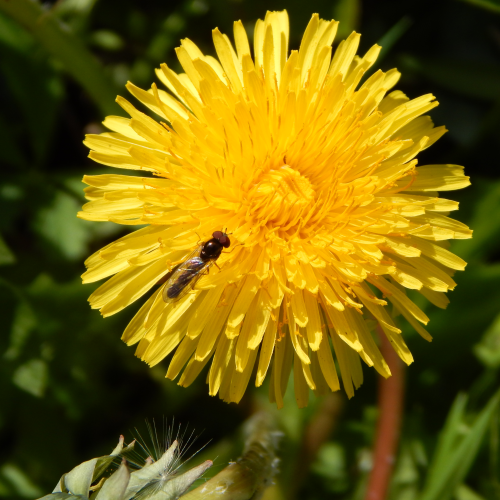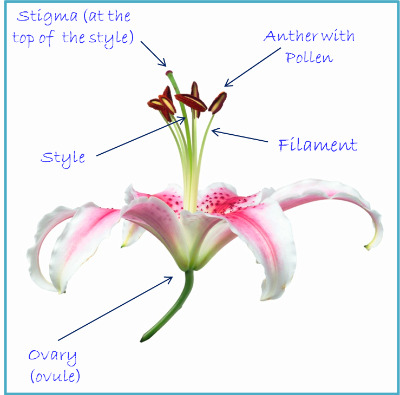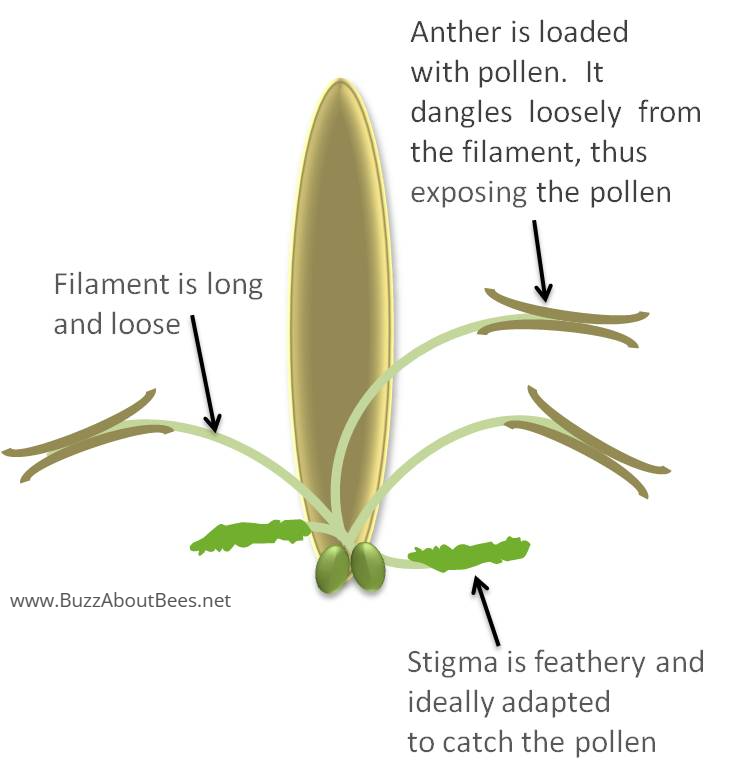Self Pollination
In some plants, the process of self pollination has evolved. This
means a single flower may pollinate itself, or other flowers on the same
plant stem.
'Autogamy':
this is pollination within a single flower.
In this case, the pollen moves from the male to the female part of the
flower – all within the same single flower.
'Geitonogamy':
some plants have several flowers on a single stem. In this case, the plant pollinates itself by passing on pollen from one flower to another, on the same plant.
Generally, plants that can pollinate themselves have carpel and stamens of a similar length, often grouped together.
In some cases, self
pollination occurs before the flower actually opens – and sometimes the
flower never actually opens at all.
This is called ‘cleistogamy’.
The advantage of being able to self pollinate is that in this way, plants have a method to reproduce even when there are no insects or other creatures to assist in this process. This has enabled some species to thrive in regions where they may otherwise have died out all together.
 Bee Orchid - Ophrys apifera.
Bee Orchid - Ophrys apifera.For example, the Bee Orchid Ophrys apifera is believed to
have evolved to look like a female bee sitting on a flower. (Some
writings suggest that some species of bee orchid such as Ophrys arachnitiformis, also emit a floral scent that mimics the female sex pheromone of one particular solitary bee species).
Yet, in the British Isles, where the pollinating bee species is rare or not present (writings vary!), Ophrys apifera has evolved the ability to self pollinate.
Even some very common flower species are able to pollinate themselves.
The dandelion actually consists of many single flowers (or florets), and
they are commonly pollinated by insects. However, the dandelion also
has a cunning mechanism to ensure it will be pollinated, whether or not
it receives a visit from a passing butterfly, hoverfly or bee.
 Dandelions can self-pollinate but are often visited by pollinating insects.
Dandelions can self-pollinate but are often visited by pollinating insects.The stigma grow through the middle of the anthers. As this happens,
pollen is automatically transferred onto the style. If no insect aids
the pollination process, the stigma curls back on itself, picking up the
pollen that caught onto the style below.
Nevertheless, on the
whole it is thought that cross pollination is actually better for
plants, in particular, a disadvantage of self-pollination is that it can
result in decreased genetic diversity.
Plant pollination
Discover more about plant pollination, with a diagramatical explanation of the process.
Cross Pollination
Cross pollination requires more than one plant, and is facilitated by
other living creatures, wind or water. Learn more on this link.
Flower pollination
How do certain flowers attract particular pollinators? Find out about the cunning tricks of flowers here!
Wind pollination
Some plant pollination is by wind. Read about it here.




